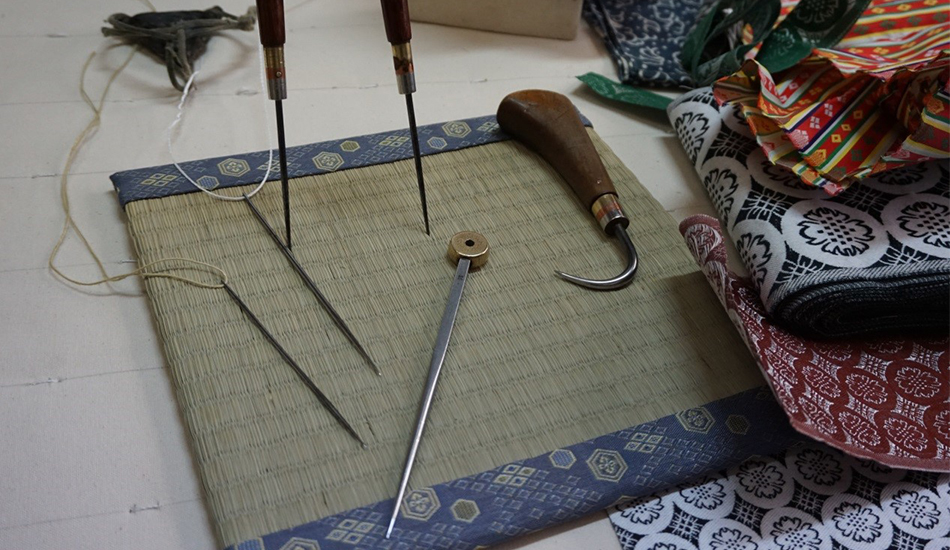The Making of Tatami – A Rush Job
Published: February 15, 2018
Tatami (rush floor matting) is an essential part of Japanese culture, even in today’s modern society. I went along to Matsuda Tatami Shop in the backstreets of Kameido, just behind Maruhachi-dori Avenue, to find out more about this traditional craft.
Mr. Matsuda explained that there are different types of tatami. Showing me a 15mm thin piece of tatami mat, he said that this is designed for simply placing on top of wooden flooring in a western-style room, and, hey presto! You have the beginnings of a Japanese-style room.

The more common standard type of tatami has dimensions of approximately 90cm by 180cm and is 55mm to 60mm thick, with cork board and polystyrene foam layers forming the backing to support the “igusa” (rush) matting and make it longer-lasting.
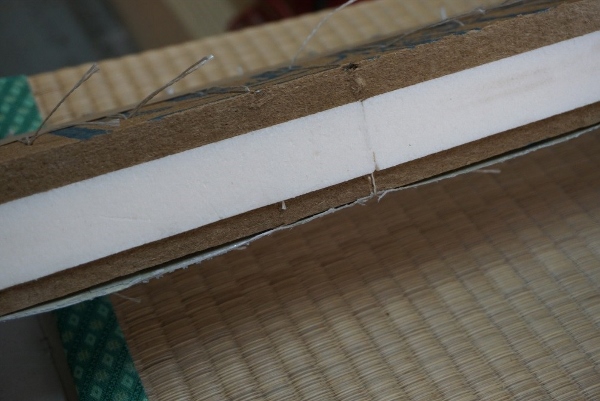
In addition, there are special types of tatami flooring used for the martial arts of judo, which have a vinyl covering, and aikido, which use a strong canvas covering.
Nowadays, 50% of the rush for making tatami comes from Kumamoto; hence the flag waving outside the workshop, bearing an effigy of the Kumamoto mascot, Kumamon, seated on tatami. The remaining 50% is provided by Chinese suppliers.
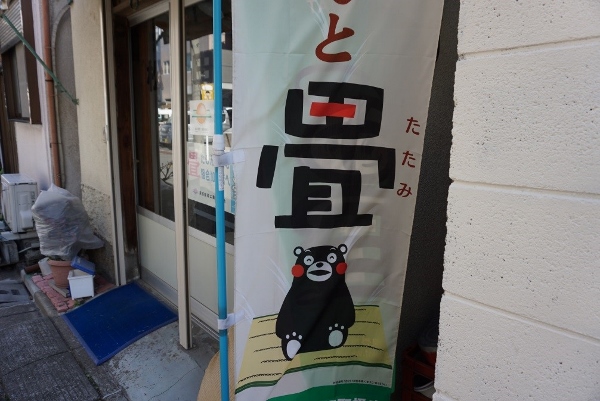
“Heri”, the beautiful embroidered edge of the tatami mat was originally made of brocade, but is these days generally made from longer-lasting synthetic materials.
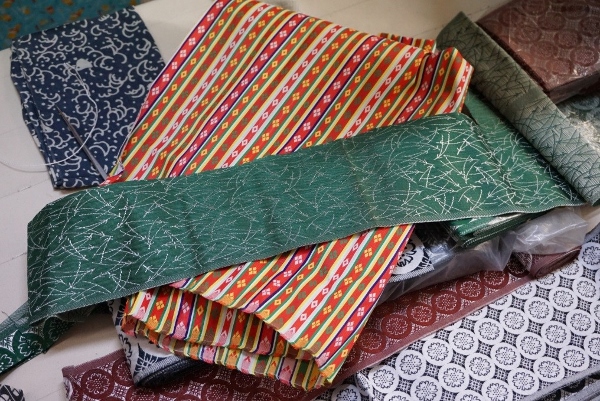
90% of Mr. Matsuda’s workload is accounted for by making tatami mats for residences, with the busiest season being autumn; the time between the harvesting of the rush crop in late summer, and the year’s end, when house owners replace their old tatami in preparation for the new year.
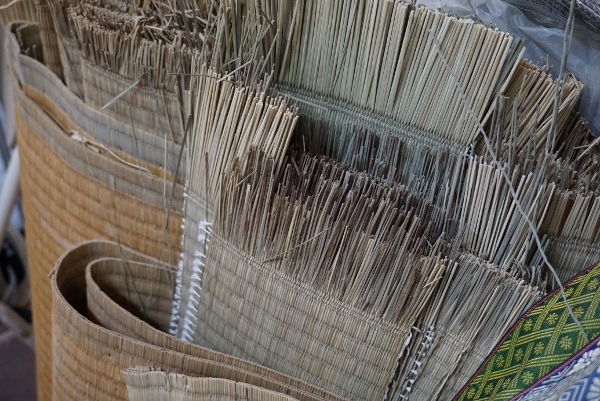
As Mr. Matsuda continued with my crash course in the art of tatami, I hadn’t realised that tatami are re-usable. Every three years or so, the tatami can be turned over and the reverse side used for another three years before the tatami is thrown away. As a comment on the changing times and social attitudes, Mr. Matsuda has noticed that where once people would regularly have their tatami replaced as a sign of affluence, they now use the money to go on holiday instead.
Prices for assembling and laying down tatami mats vary depending on the size of the room and the quality of the tatami; for example, a six-tatami room can be laid for between 39,000 and 60,000 yen, depending on the quality of the materials used.

Mr. Matsuda sat and demonstrated how he puts together a tatami mat, comprising the backing, the sheet of woven rush matting and the “heri”; Mr. Matsuda stitches the components together to create the tatami floor mat which we all recognise.
This is tough, exacting work, which requires a lot of strength as well as skill and care. Looking at Mr. Matsuda’s tool kit of “tsukibari”, “machibara”, “herishiki”, “tatamibari” and “te-ate”, I was struck by how little these tools must have changed over time.


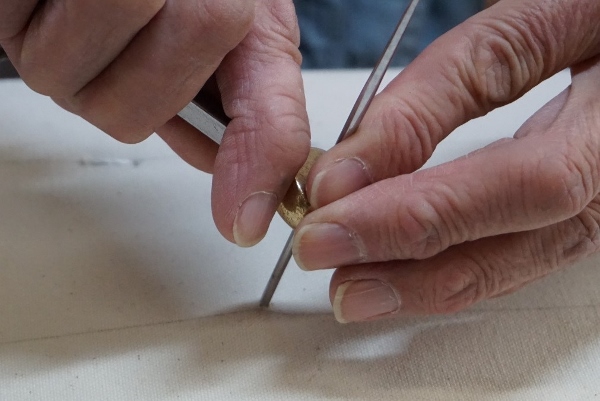
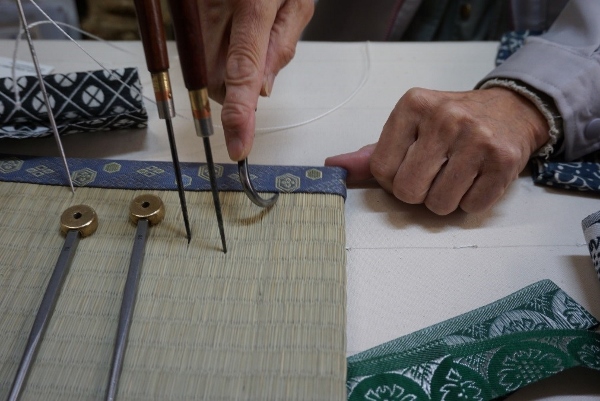
But then he went and revealed a small but strong portable sewing machine sitting behind him, which he takes with him for stitching the tatami on site. It seems that even the traditional methods of making tatami are subject to change.
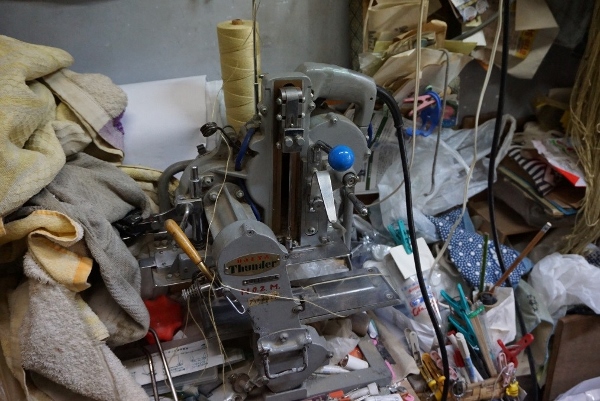
To promote the continuation of this traditional craft, Mr. Matusda takes part in events at local ward and city level, which let residents try their hands at stitching together tatami mats. He says that he hopes to be involved in initiatives to provide tatami matting areas for competitors at the 2020 Tokyo Olympics, so they can stretch out and relax in the Olympic Village before and after competitions.
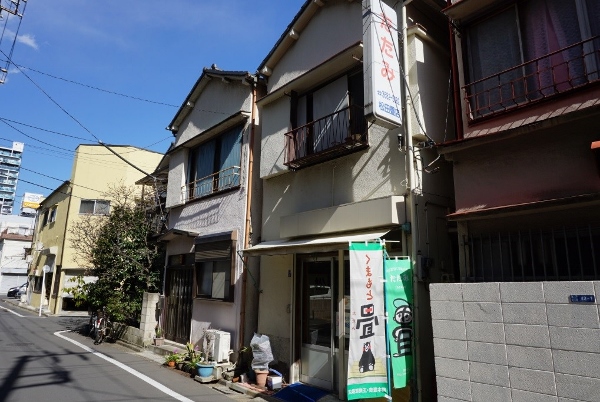
Admiring the handiwork which goes into making tatami flooring, and inhaling the distinct smell of fresh tatami, I can begin to understand the lure of tatami and Mr. Matsuda’s comment that he is grateful to tatami for providing him with a living for the past 46 years.
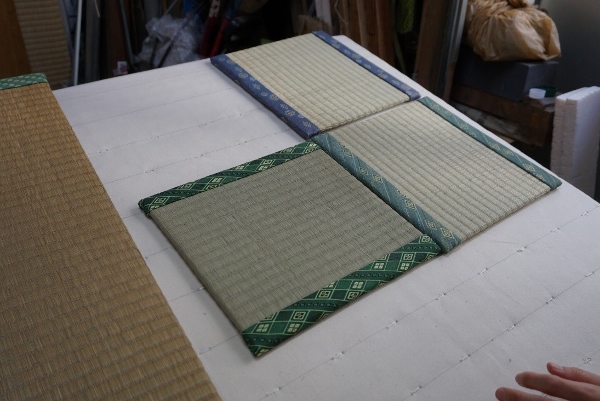
Story and Photos by Jeremy Hutchinson

